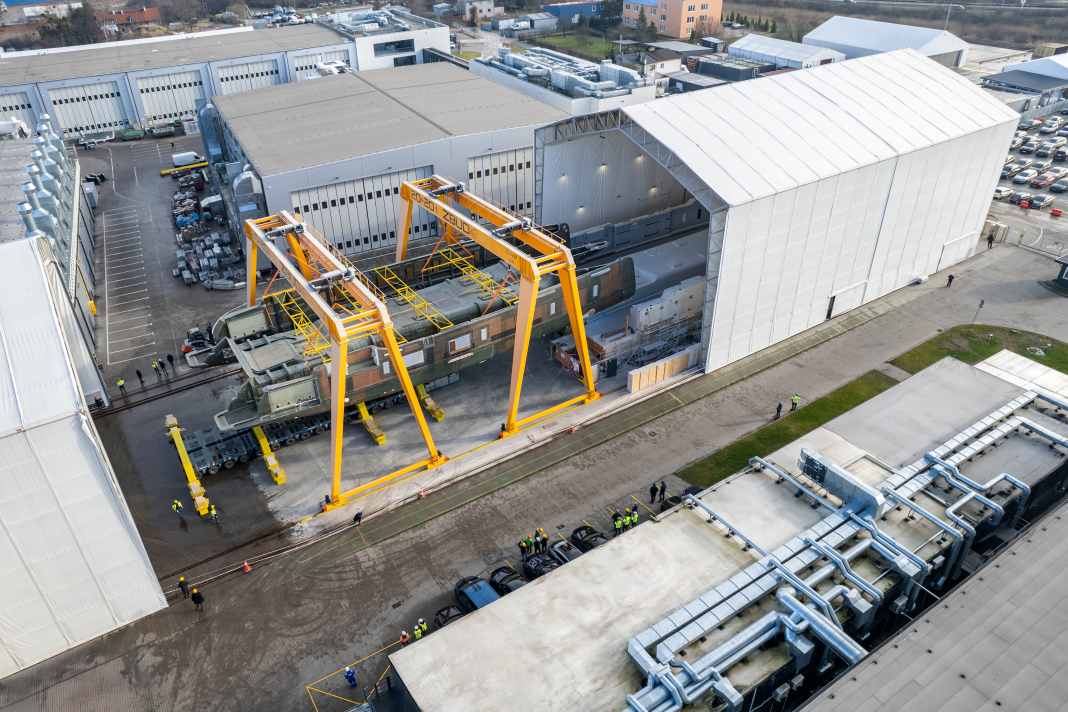





Sunreef operates one of the largest CNC milling machines in Europe in Gdansk, which shapes components up to 30 metres long. Recently, however, it was the two double-girder gantry cranes that had their work cut out for them. The Polish yacht builders needed two weeks to remove the 43 metre long and 15.40 metre wide hull construction of the first Sunreef 43M Eco from the negative mould. Before demoulding, semi-finished fibre products - made of glass and, for reinforcement, carbon - had to be completely saturated with resin over an area of 1,700 square metres - and all in a single "shot". The Gdansk shipyard is therefore likely to have achieved a world record that was previously held by Horizon Yachts from Taiwan with a monohull motor yacht of the same length. The title of the world's longest sailing catamaran is held by the 47 metre long "Artexplorer"which was made from aluminium in Italy.
The Kat shipyard, founded by French electrical engineer Francis Lapp, has been using the vacuum infusion process since 2007. The sandwich materials of the hull and deck structures, including the component-stiffening stringers, which are stored in a negative mould, are packed in an airtight film that allows the component to be placed under vacuum. The number of resin infusion points are then determined to suit the shape and size and connected with hoses. Negative pressure sucks the resin from prepared containers into the sandwich material until the optimum resin-fibre ratio is achieved and all air has escaped.
Owner's representative praises Sunreef's work
The Swiss superyacht experts from Ocean Independence act as project managers and representatives of the client. "This is not just about scale, it's about precision engineering," explains Thomas Carey, Project Manager at Ocean Independence. "Once the hull was demoulded, the surface finish exceeded expectations at the first inspection, even before the final preparation for painting."
Now the plan is to make rapid progress. Sunreef's modular approach involves simultaneous work on bulkheads, technical systems, interior fittings and the decks. "The efficiency of the construction process is now becoming clear," says Carey. "What began two years ago with extensive design discussions is now being realised at an impressive pace. The shipyard's approach allows us to progress several aspects simultaneously and it's our job to bring all the elements together."
Sunreef Eco: Solar, batteries, hydrogenerator
Already involved in this phase is Captain Jim Thom, who brings with him experience with Fife gems and cruises through extreme latitudes: "The electric systems bring profound benefits for the environment. The silence underway and at anchor will add another dimension to the experience in remote locations." Beyond construction supervision, Captain Jim Thom is driving forward the owner's ambitious plans for worldwide cruising. The plan is to have a sail area of 1,000 square metres on the cross and 1,600 square metres downwind on Lorima's 49-metre carbon mast.
Under sail, the Sunreef 43M Eco will generate electricity via the two propellers and the 250-kilowatt electric motors. The solid-state batteries with a capacity of 1 MWh also feed 250 m² of solar panels, which Sunreef develops and manufactures itself, when the sun is shining. Some of the PV modules will be located on the side walls. The 43-metre cat is fully electric and will be able to navigate through calm periods for up to twelve hours. Up to twelve guests are expected to be on board by 2025, and a second 43M Eco is also being built in Gdansk. Sunreef has supplied motorised catamarans to the sports superstars in the past Fernando Alonso and Rafael Nadal.
